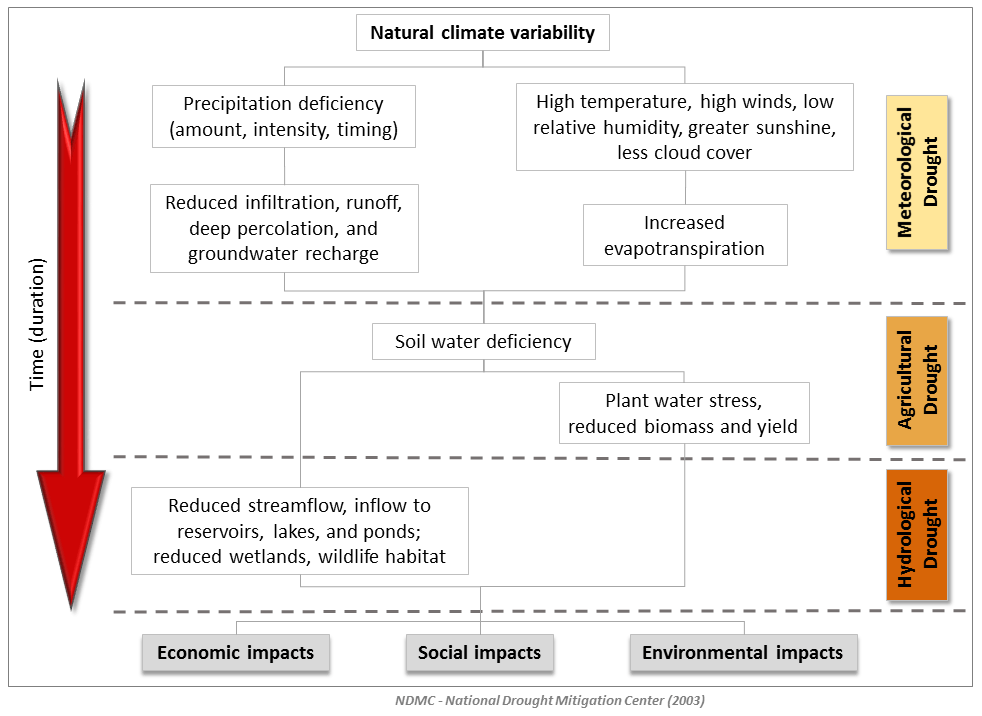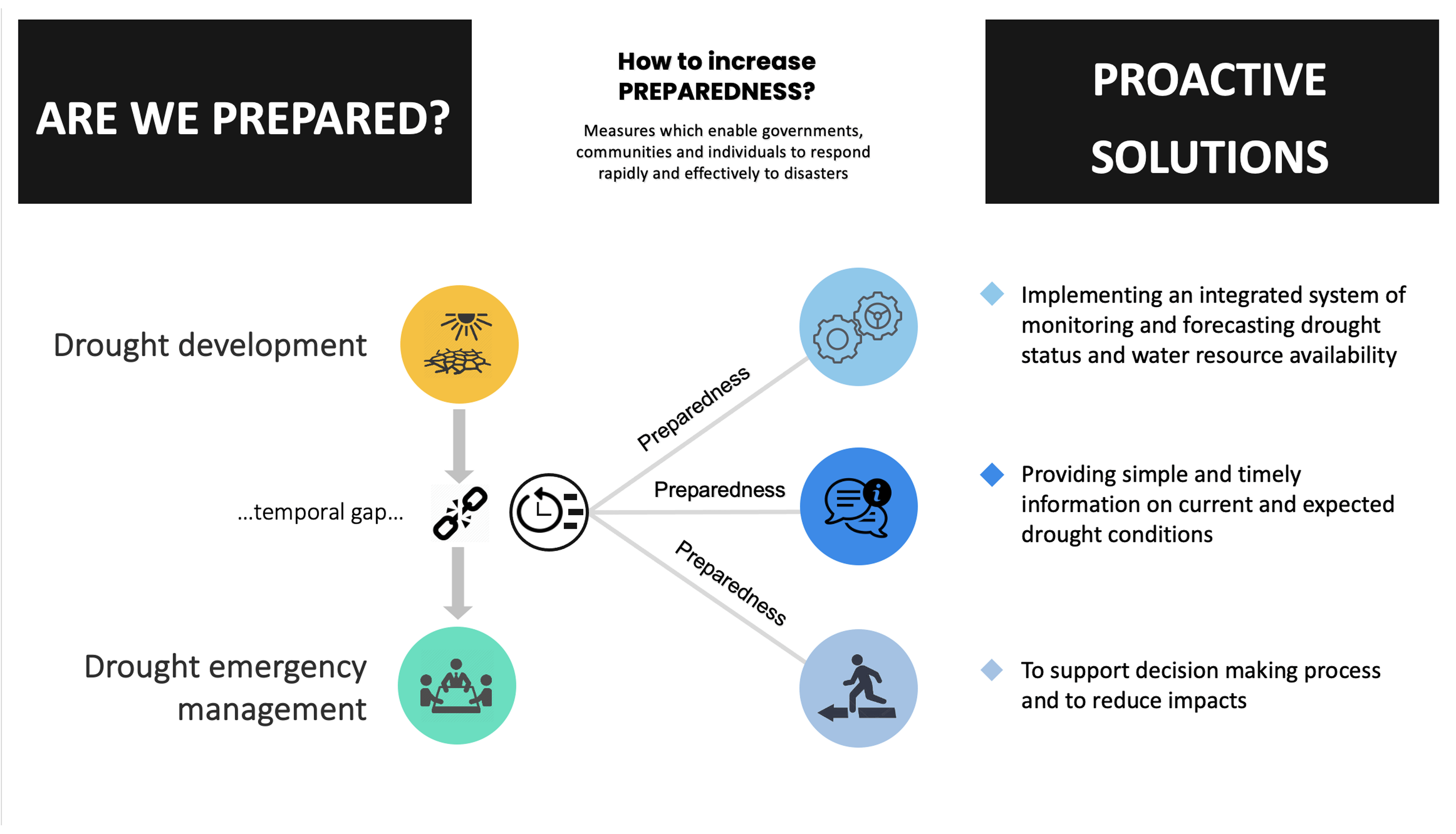The Phenomenon
Drought is a creeping phenomenon, with a slow onset and different definitions
Redmond (2002), in fact, defines drought as a “Condition of insufficient water to meet needs”. Drought differs from Aridity, the latter being a permanent feature of climate, occurring in areas characterized by a permanent water deficit due to lack of precipitation and high evapotranspiration.
Characteristics of Drought
Drought can have different impacts depending on its characteristics
Duration
Intensity
Geographic extent
Frequency
Slow onset
One rainfall doesn’t necessarily end a drought event.
TYPES OF DROUGHT
Wilhite, D.A., 2000. “Drought as a natural hazard: concepts and definitions” in Drought: A Global Assessment, Volume I, D. A. Wilhite (ed.). Routledge, London, pp. 3-18.

METEOROLOGICAL DROUGHT
Reduction of precipitation below the climatological average (at least 30 years), for a specified period (e.g. days, months, years) in a specified area.
AGRICULTURAL DROUGHT
Decreasing of water availability (due to rainfall shortage and increasing of evapotranspiration) in the root zone, that impacts on the optimal crop growth (specially in some critical phenological phases), causing the yields reduction.
HYDROLOGICAL DROUGHT
Involves a reduction in water resources (streamflows, lake levels, groundwater, underground aquifers) below a specified level for a given period of time, due to a long-lasting precipitation reduction.
SOCIO-ECONOMIC DROUGHT
Socio-economic drought is associated with the supply/demand of water related to some economic goods and needs.
During particularly intense and extended droughts, water allocation for common human activities can be compromised.
WATER SHORTAGE AND ITS IMPACTS
The decreasing of water availability causes direct and indirect damages to ecosystems and anthropic activities

Why a Drought Climate Service
There is a temporal gap between the development of a drought event and the management of the emergencies. Often this gap is too big to effectively reduce drought impacts. Moreover, information is frequently scattered and not optimally integrated to support different users’ needs.
Therefore, to improve readiness we have to invest on proactive solutions able to provide timely and simple information.

Climate Service is not a simple data sharing, but a producer of useful information.
To be effective, the Drought Climate Service has to respond to different priorities and users’ needs, following some main requirements:
- Information continuously updated and timely delivered
- Expandable platform and on-demand services
- Products appropriate to the users’ competences and technical skills

PARTICIPATORY APPROACH
Local, regional, national and international users can ask at any time updated information more useful for their assessments or their further investigations, and even in other geographical areas covered by the available datasets.


